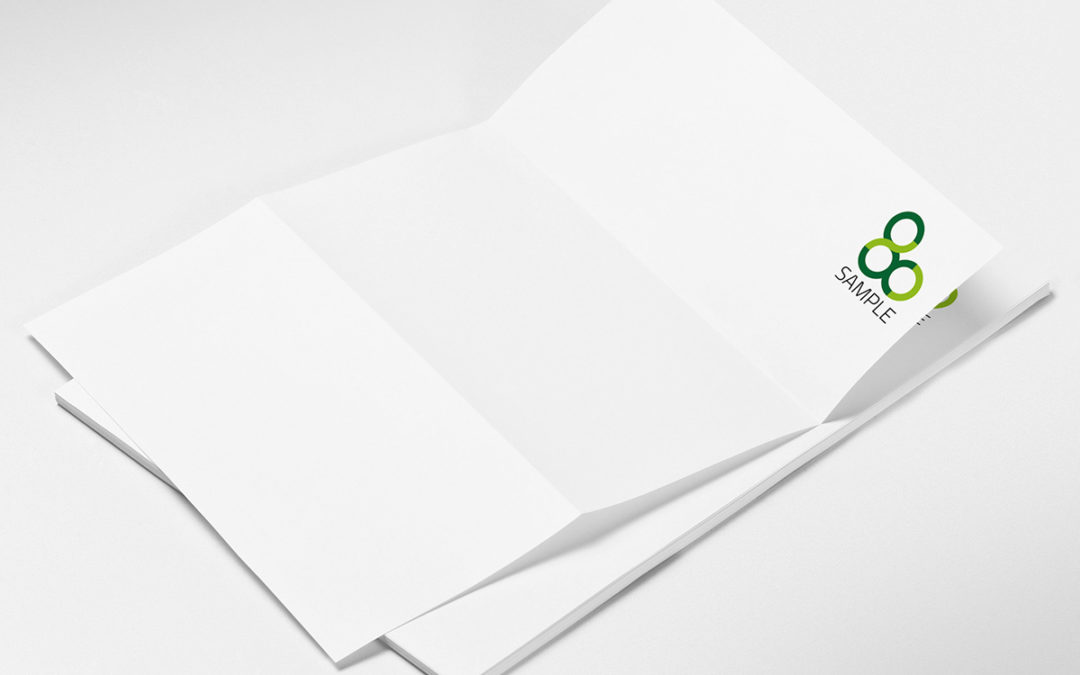How do you procure noble, high-quality stationery for your company without the costs getting out of hand? There is a simple trick for this.
Extravagant designer paper is very often the first thing that comes to a graphic designer’s mind when a customer wants particularly fine business stationery. These premium papers come in hundreds, if not thousands of variations – and experts indulge themselves with the greatest pleasure in the thick sample books that the manufacturers publish for them. A wide variety of surfaces, white tones, raw materials and weights are available to choose from, making the heart of every paper lover beat faster.
For small quantities – e.g. 500 sheets of letterhead – expensive paper is a sensible choice for style-conscious companies, because the price of paper is generally not very significant in relation to the total costs. (Incidentally, this rule applies to business cards up to medium order volumes of several 10,000 cards per year, because here the paper content is particularly low). But as soon as the print runs become larger – e.g. 10,000 or 20,000 sheets of letterhead – the price of paper starts to play a role. So you should definitely consider whether a standard paper is not the better choice after all. Those who still want to give a high-quality impression can simply choose a stronger weight than usual – e.g. offset paper with 100 or 120g/m2 instead of 90g/m2. The additional costs are limited, and yet a letter printed on it will still make a positive impression.
An example
With 10,000 sheets of A4 letter paper, printed in 4 colours on one side, the surcharge for offset paper 120g/m2 instead of 90g/m2 is about 70 to 90 percent with most suppliers. At first glance, this seems to be quite a lot – at least considerably more than the only 33% higher paper grammage would suggest. Why the significant difference? After all, 120 g offset paper is also a standard grade that is regularly used in most printing plants and – like the 90 g variant – can be produced in large gang formations. The price surcharge is simply due to the fact that 90g paper is processed in x times larger quantities than 120g. Entire production lines produce only 90g letterhead paper day in, day out, while 120g sheets run through the machines perhaps only a few times a week – both in the paper mills and in the printing plants.
With designer paper, which is individually selected by the graphic designer, it gets much, much thicker: special papers have to be procured by the printing company for a single job, and in comparatively small quantities – with the corresponding logistics effort, waste allowance and sometimes in unsuitable packaging units, which result in corresponding residual quantities. For example, 10,000 sheets of letterhead from the desired paper can quickly cost 10 or even 20 times (!) more than standard paper. To be even more specific: The paper price alone for 10,000 A4 sheets of the well-known “Conqueror CX22” premium paper in 100g/m2, for example, amounts to more than 600 euros (as of 3/2020) – in addition to this, there is the additional cost of individual procurement and separate printing, as collective forms cannot usually be used.
Granted: Expensive brand papers are a visual and haptic delight for the trained eye and the experienced hand. The layman, however, rarely recognizes the difference – especially since the direct comparison for the recipients of a letter is missing in the rules. Very often, however, the paper thickness is perceived – even if subconsciously: the heavier, the better. There are own studies on this, e.g. https://link.springer.com/chapter/10.1007/978-3-658-08876-7_11 (for a fee).
Conclusion
If money is not an issue, designer papers are a wonderful way to get rid of it. If your budget is limited but you still want your business stationery to be significantly better than average, choose heavier grammages of standard papers.

